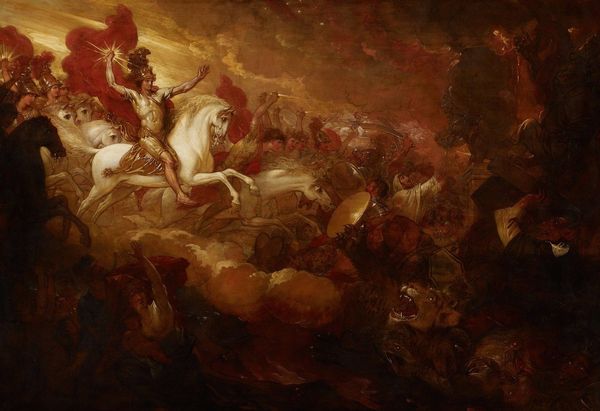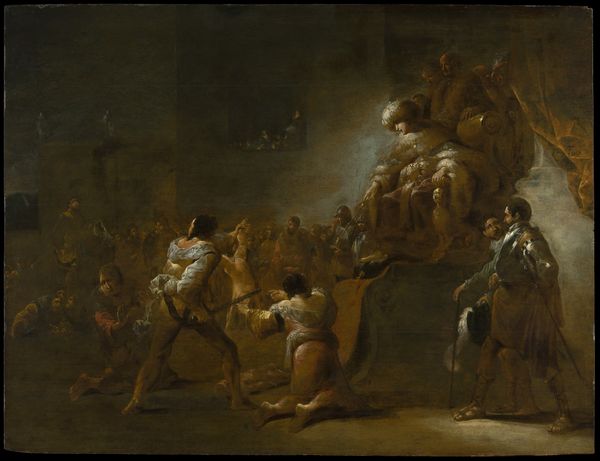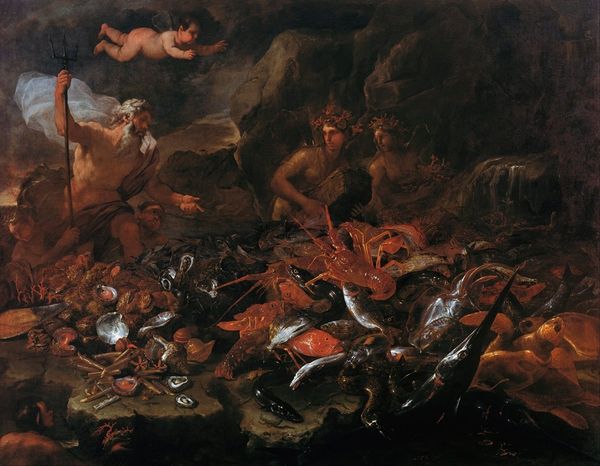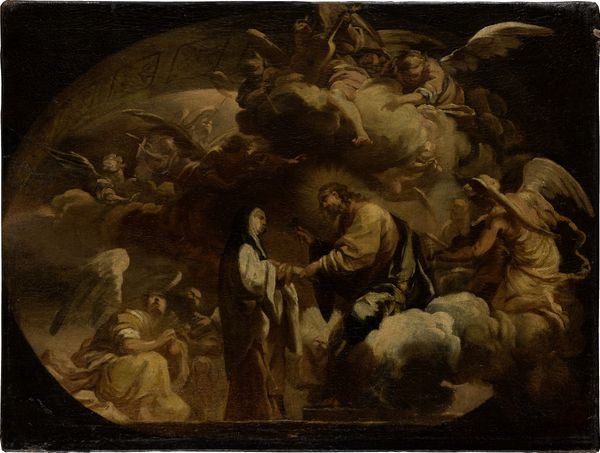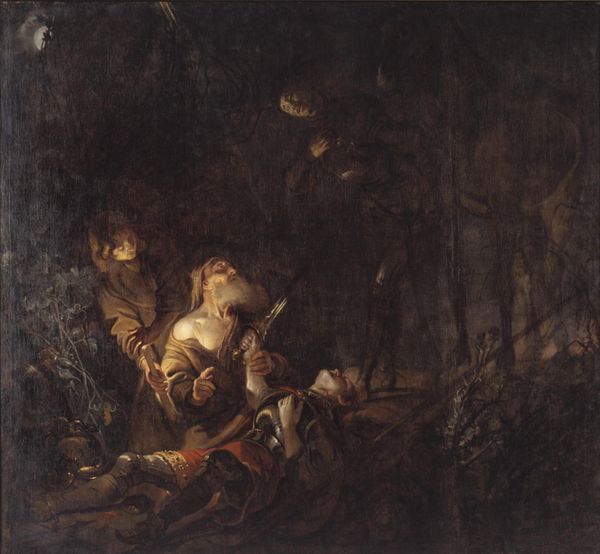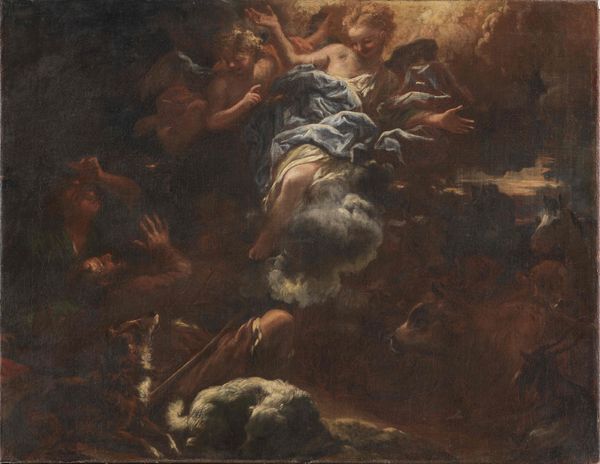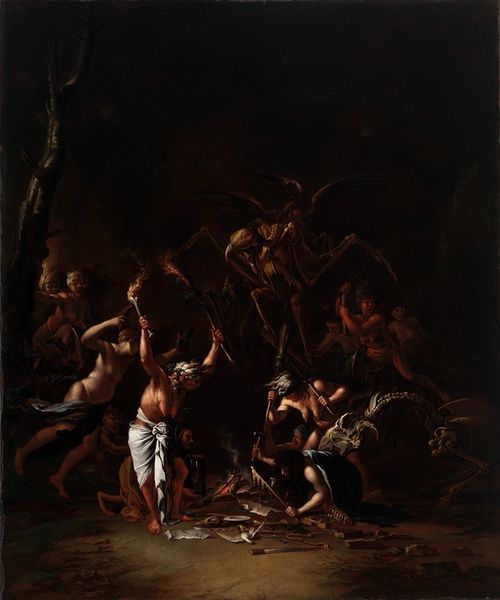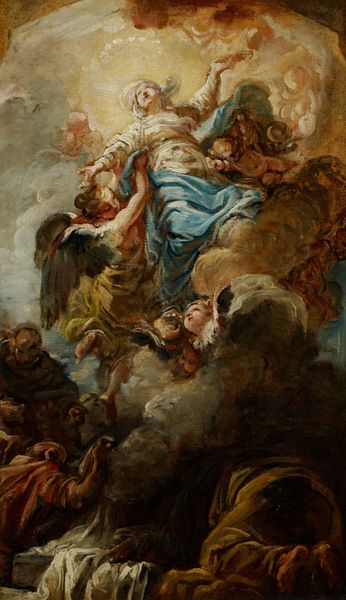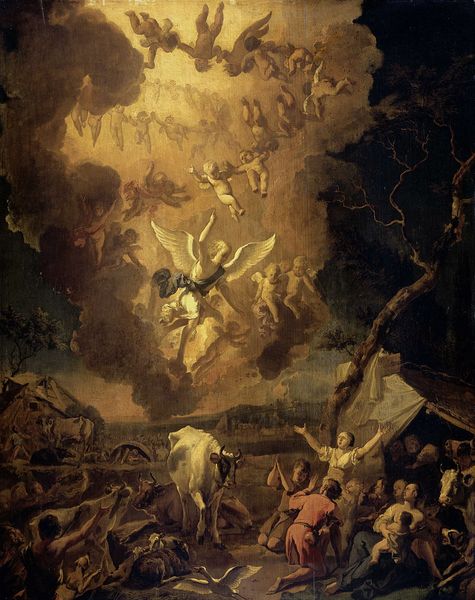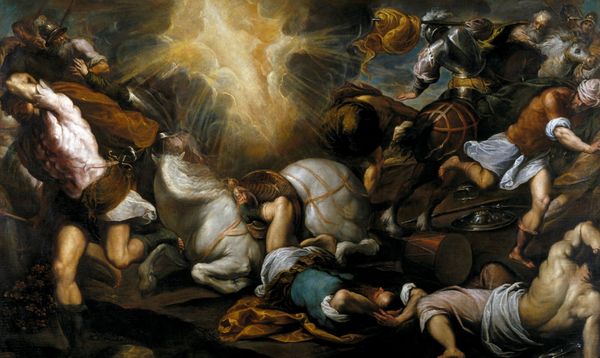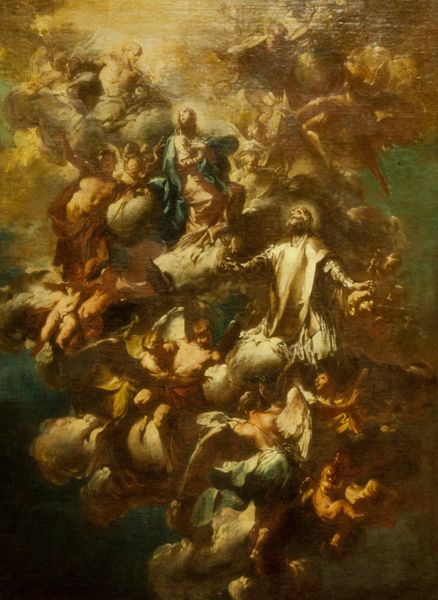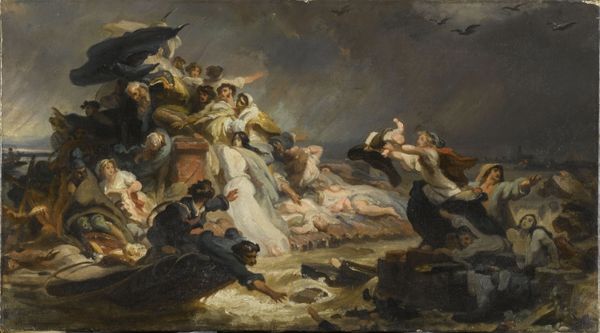
painting, oil-paint, sculpture
#
allegory
#
baroque
#
painting
#
oil-paint
#
landscape
#
fantasy-art
#
figuration
#
sculpture
#
genre-painting
Dimensions: 21 3/8 × 30 3/4 in. (54.3 × 78.2 cm)
Copyright: Public Domain
Editor: This oil painting, "A Witches' Sabbath," was created around 1650 by Cornelis Saftleven. There's an unsettling energy to it. What's striking is the depiction of bodies in a state of frenzy amidst the gloominess of the scene. How do you interpret this work? Curator: Saftleven presents the material culture of the time--the anxieties around witchcraft expressed through oil on canvas, a commodity in itself. The very act of representing these alleged rituals was a form of cultural consumption. We must consider what these scenes were 'made' to represent by wealthy landowners. Notice the use of available materials in the craft that emphasize making it more available to viewers. Do you think the act of production makes it a spectacle of fear? Editor: Absolutely. By visually documenting witchcraft using readily accessible art materials, Saftleven makes this imagined 'threat' accessible. The darkness in the painting and the writhing figures create a spectacle. This suggests a need for the culture to produce and consume the fear, perhaps as a method of social control. Is it that simple? Curator: Precisely! Now, let's think about how social tensions surrounding labor and resources may have shaped this narrative. Did this period’s shift of agricultural economy possibly lead to increased distrust towards communal land use traditions often connected with women, hence “witchcraft”? The landscape isn’t just a backdrop; it's where labor takes place. The landscape here has material value and therefore labor. What does the raw physicality and earthiness represent? Editor: I see your point. The darkness isn’t just dramatic; it's also suggestive of labor exploitation occurring in remote locations outside of social views and regulations, and these narratives could keep rural populations in control under the control of elite land owners and city populations consuming these raw materials! I'd not considered that! Curator: By examining the historical context of production, Saftleven's materials can take on richer meanings than the fantastical scene lets on at first glance. Editor: It definitely adds another layer to the interpretation, by looking at the historical economic system to determine that its purpose was really about raw material and control and more than 'witches'.
Comments
No comments
Be the first to comment and join the conversation on the ultimate creative platform.
